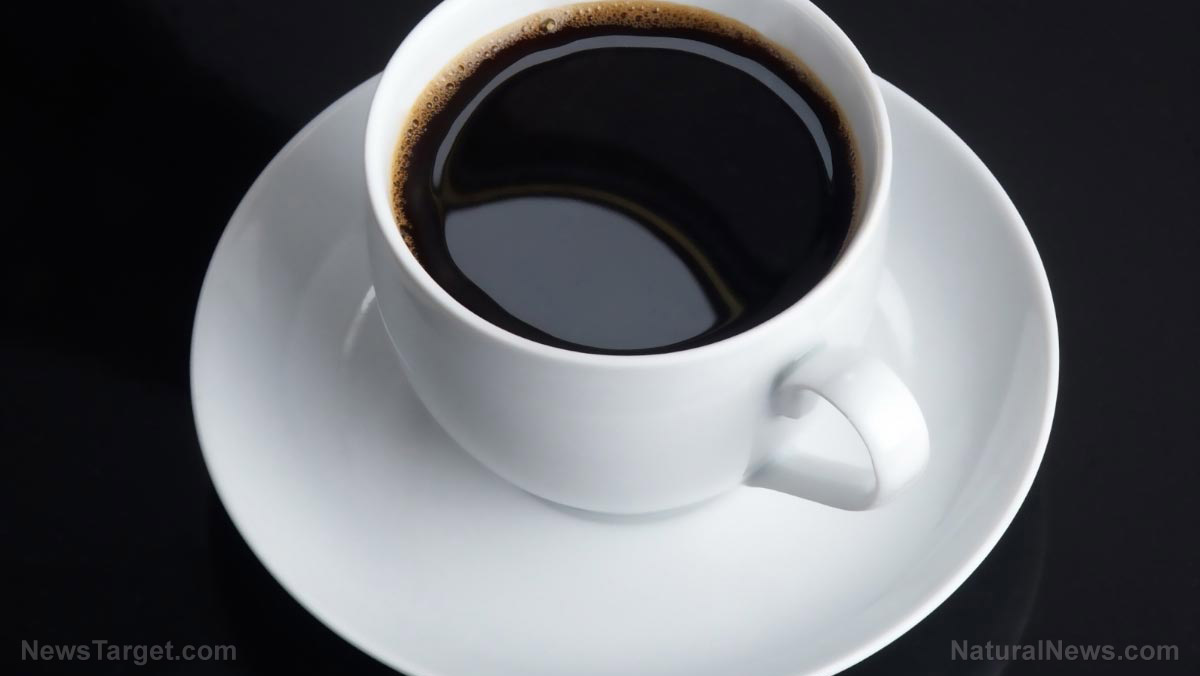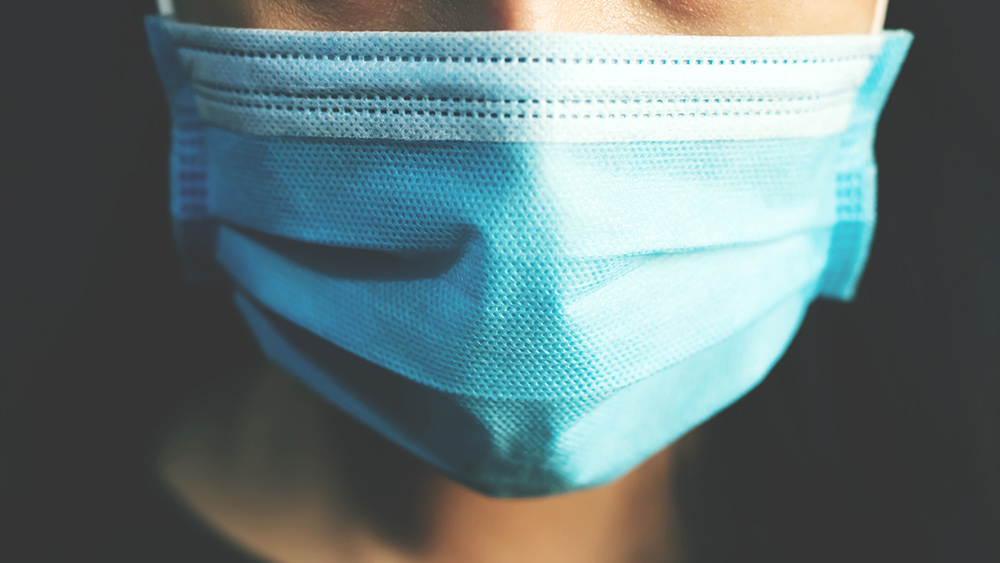 Parler
Parler Gab
Gab
- How fresh is the coffee in a K Cup?
- What toxins am I exposing myself to as the hot water forces the coffee through the little holes poked in the plastic cup?
- What is that lid made of that is poked at the top to allow the water to enter the cup?
- What chemicals are used in the flavored coffee selections?
- Is there a filter inside the plastic cup? What is it made of and how is it secured inside the plastic cup?


 Won't the Hot Water Kill the Bacteria and Mold?
Won't the Hot Water Kill the Bacteria and Mold?
No, your water is not getting hot enough to kill all microbes that are living in your coffee system. For that to happen, the water would need to reach boiling temperature and stay there for one minute.
Can you clean the Keurig? The first step is to empty out the exterior water tank and look inside the tank. Does it feel slimy? Clean and dry that tank and run a few cycles of diluted vinegar through the Keurig. Good luck with that. One person said, "I could still smell a moldy aroma after doing quite a few vinegar cycles. There were also black, floaty things in my cup even when I just brewed hot water." Some Keurig owners claim to have used vinegar to clean their machines, but when the units were opened, mold was found. Plastic K Cups Conundrum The Plastic - The K Cup is a composite plastic, #7. Although this is technically BPA-free, the chemicals from the composite plastic are not safe and they still have estrogenic activity. The authors of a study published July 1, 2011 in Environmental Health Perspectives, PMID: 21367689, wrote:Almost all commercially available plastic products we sampled—independent of the type of resin, product, or retail source—leached chemicals having reliably detectable estrogenic activity (EA), including those advertised as BPA free. In some cases, BPA-free products released chemicals having more EA than did BPA-containing products.Most Plastic Products Release Estrogenic Chemicals.As long as I mentioned fake estrogens coming from the plastic in your K Cup, don't make a bad situation worse by adding soy milk to your coffee! (Men, would you like "moobs" with your mocha and soy?) The Cups Are Non-Recyclable - Keurig sold more than 9 billion of its single-serve plastic coffee pods, called K-Cups, in 2015. This is a big problem for the environment since we have seen an explosion in the use of single cup coffee makers, like Keurig, in the last few years. MotherJones.com reported, over 8.3 billion K Cups a year are discarded, enough to circle the earth 10.5 times!
Adam Minter, Bloomberg View, sees it differently. According to the Hamburg Department of the Environment and Energy, the average coffee pod weighs three grams (Nespresso's popular 1.2-gram pods and others weigh less). Using that figure, all those Green Mountain K-Cups would cumulatively weigh 25,500 metric tons. He doesn't think this is a problem in the grand scheme of our problem with plastic waste. Update 2017: Keurig Green Mountain said it plans to change the plastic composition in the billions of K-cup single-serving coffee containers it sells by 2020. It will not be easy to recycle the new containers. Peeling apart components, separating the aluminum, recycling in the proper place . . . it seems like Keurig is trying, but the whole concept of delivering fresh coffee in a recyclable way just goes back to using a regular coffee maker or French Press. It is not likely they will ever be fully recyclable.
The Lid is Polyethylene Coated Foil Aluminum foil. Yes, we would like to avoid aluminum because of the connection with the biggies: MIT scientist, Dr. Stephanie Seneff, PhD has given a talk, "How aluminum and glyphosate (Roundup) collaborate to cause anxiety, depression, autism and celiac disease" you can still get MP3s and transcripts if you are interested. A study published in the Journal of Alzheimer's Disease (PMID:21157018) found that very small amounts of Aluminum are needed to produce neurotoxicity (dietary intake via food containers). Small amounts of aluminum accumulate over a lifetime and aluminum seems to accumulate most in brain tissues. Since 1911, experimental evidence has repeatedly demonstrated that chronic aluminum exposure reproduces neuropathological hallmarks of Alzheimer's Disease. The Filter The filter is made of filter paper and ? -I don't know but somehow it is fused or glued inside the plastic cup. Reusable K Cups Although there are reusable K Cups on the market, reviews are mixed but you are still faced with the stagnant water situation and hidden water tanks and tubing that cannot be cleaned. The reusable cups still need to be filled every time you make a cup of coffee and the filter needs to be cleaned every time. There goes your convenience, but if you are willing to risk the microbes, then this is better for the environment and more economical. The Coffee The flavored coffee K cups are typically flavored with "natural" or artificial flavors. There is no vanilla or caramel in Green Mountain Caramel Vanilla Cream -it is just coffee + artificial/natural flavor. We know that food manufacturers use these names (artificial flavor and natural flavor) to hide ingredients that act like MSG, a neurotoxin. I help people get to the root cause of chronic migraines and headaches. Often these MSG flavors are causing the problem. One Keurig K cup user complained of nausea, fatigue, dizziness and vomiting. "This all started when my work got a Keurig machine and I started drinking their tea regularly." Another user reported, "I have noticed when I use the K Cups on a daily basis, my lips tend to get dry and numb on the outside." One of my clients noticed a connection between skin rashes and the use of the Keurig K cups with flavoring. This could be a reaction to "natural" and artificial flavors often found in flavored coffee. Do YOU Care? Do you care about the taste and quality of your coffee? Do you care about the environment and the workers in the coffee bean industry? Do you care about your health? There is nothing like a steaming hot cup of freshly brewed coffee made with quality coffee beans. Using the Keurig was easy, but the taste was marginal. I do not consider myself a coffee connoisseur, but I love a good cup of coffee. Finally, I allowed myself to consider all the issues with the Keurig and I decided to kick my Keurig to the curb. Now That's a Good Cup of Coffee The coffee beans you purchase should look inky black and ideally they are Fair Trade, organic and shade grown.- The coffee beans should have been grown and processed without the use of pesticides, herbicide or chemicals. "Most people are not aware that regular coffee consumption can be a significant source of pesticides. According to the CS Monitor, conventional farmers apply up to 250 pounds of chemical fertilizers per acre!" -Mercola.com
- We know that pesticides are contributing to the growing rate of cancer, Parkinson's Disease and miscarriage.
- Use non-bleached filters. White filters have been bleached with chlorinated bleach.
- Shade grown coffee is better tasting coffee because shade-coffee beans ripen more slowly, resulting in a richer flavor. More importantly it is better for the environment and provides a healthier environment for the workers.
 beans.
Get a grinder and grind at home. Brew using spring water.
Use Spring Water or Filtered Water.
Brew the coffee using a device that you can thoroughly clean and dry, like French Press and Pour Over, but really there are many options. Even an automatic drip or percolator is going to be a better option than a Keurig.
Many people consider the French Press to be the ultimate coffee brewing method. Coarse ground coffee is allowed to steep for several minutes in boiling water in the French Press. The result is a richer, fuller flavor with more aroma and a more delightful coffee experience. It is interesting to note that French Press coffee is higher in cafestol, a fraction of coffee that has been shown in studies to raise triglycerides and LDL cholesterol. If you are concerned about high triglycerides then this may not be the system for you. However, using a non-bleached coffee filter with a coffee maker will remove the cafestol. There are many studies to support this found on PubMed.gov.
Is Coffee Healthy?
For the general population the evidence from several large studies suggests that moderate coffee drinking is not detrimental to health and may have several health benefits. If coffee gives you the shakes, disturbs sleep, and increases stress, then cut back or eliminate coffee. It is never healthy to drink pesticides in coffee. It is never healthy to have an increased exposure to estrogenic compounds from plastic K Cups. It is never healthy to continue to make coffee with any machine that is harboring mold and bacteria.
Stop Drinking Froo Froo Coffee Drinks
The cafe on the corner may be serving up delicious coffee drinks, but take the time to look up the ingredients and calorie content of your favorite drink. Many contain artificial flavors (MSG), high fructose corn syrup, caramel color and preservatives. This type of coffee is not going to give you any health benefits.
beans.
Get a grinder and grind at home. Brew using spring water.
Use Spring Water or Filtered Water.
Brew the coffee using a device that you can thoroughly clean and dry, like French Press and Pour Over, but really there are many options. Even an automatic drip or percolator is going to be a better option than a Keurig.
Many people consider the French Press to be the ultimate coffee brewing method. Coarse ground coffee is allowed to steep for several minutes in boiling water in the French Press. The result is a richer, fuller flavor with more aroma and a more delightful coffee experience. It is interesting to note that French Press coffee is higher in cafestol, a fraction of coffee that has been shown in studies to raise triglycerides and LDL cholesterol. If you are concerned about high triglycerides then this may not be the system for you. However, using a non-bleached coffee filter with a coffee maker will remove the cafestol. There are many studies to support this found on PubMed.gov.
Is Coffee Healthy?
For the general population the evidence from several large studies suggests that moderate coffee drinking is not detrimental to health and may have several health benefits. If coffee gives you the shakes, disturbs sleep, and increases stress, then cut back or eliminate coffee. It is never healthy to drink pesticides in coffee. It is never healthy to have an increased exposure to estrogenic compounds from plastic K Cups. It is never healthy to continue to make coffee with any machine that is harboring mold and bacteria.
Stop Drinking Froo Froo Coffee Drinks
The cafe on the corner may be serving up delicious coffee drinks, but take the time to look up the ingredients and calorie content of your favorite drink. Many contain artificial flavors (MSG), high fructose corn syrup, caramel color and preservatives. This type of coffee is not going to give you any health benefits.
.jpg) Ice, Milk, Coffee, Sugar, Water, Salt, Natural And Artificial Flavors, Xanthan Gum, Potassium Sorbate, Citric Acid, Cream, Mono And Diglycerides (Trans Fats), Carrageenan, Nonfat Dry Milk, Soy Lecithin, Sulfites
Ice, Milk, Coffee, Sugar, Water, Salt, Natural And Artificial Flavors, Xanthan Gum, Potassium Sorbate, Citric Acid, Cream, Mono And Diglycerides (Trans Fats), Carrageenan, Nonfat Dry Milk, Soy Lecithin, Sulfites
AI-controlled planes now a reality, but are they a boon or bane in the sky?
By Richard Brown // Share
Here’s the HARD PROOF that COVID jabs were intentionally designed to kill unborn babies
By Ethan Huff // Share
Governments continue to obscure COVID-19 vaccine data amid rising concerns over excess deaths
By patricklewis // Share
Tech giant Microsoft backs EXTINCTION with its support of carbon capture programs
By ramontomeydw // Share
Germany to resume arms exports to Israel despite repeated ceasefire violations
By isabelle // Share












